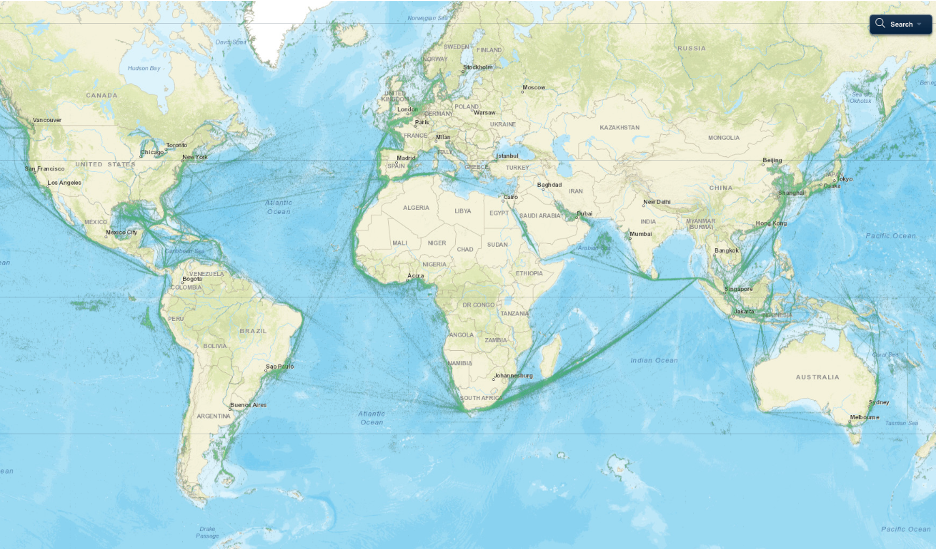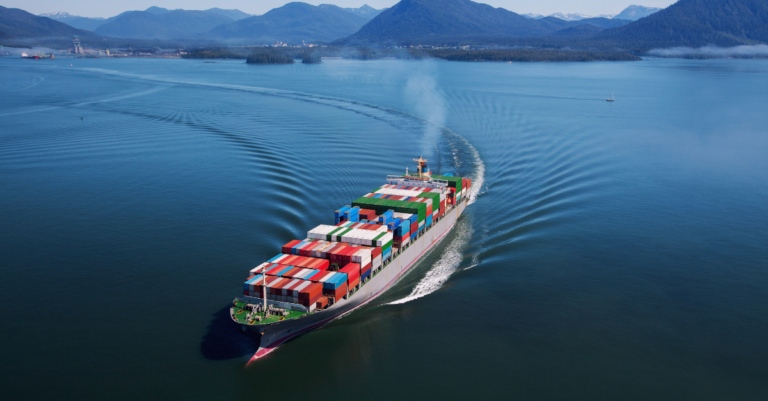Maritime transport is the cornerstone of global trade, so keeping it efficient is more important than ever as international demands rise. The recent Red Sea conflict and the resulting chaos at the Suez Canal have shown just how vital robust solutions are to maintaining smooth operations. This is where GSTS’ OCIANA® Port Optimiser steps in, offering a practical way to balance cost management with operational efficiency. It’s all about making sure everything runs smoothly and cost-effectively, when the seas get rough.
The Cost Management vs. Operational Efficiency Dilemma
The maritime industry is currently grappling with the challenge of managing costs while maintaining operational efficiency. The rerouting of ships from the Suez Canal to the Cape of Good Hope, for instance, adds approximately 4,000 miles to each journey.1
This increased distance results in nearly 30% higher fuel consumption per trip and has caused shipping costs on some routes to surge by up to 40%.1 Moreover, insurance premiums have escalated due to the heightened risk of attacks in the region.

OCIANA®: Preparing you for a dynamic shipping environment
OCIANA’s provides accurate long-horizon, multi-stop ETA predictions for liners and tramp vessels. This advanced tool enables supply chain leaders to dynamically assess vessel arrival time reliability, allowing for more informed planning and decision-making. Let’s delve into how this feature addresses the cost management vs. operational efficiency challenge:
Accurate ETA Predictions & Optimized Scheduling
By offering precise and dynamic ETA predictions, OCIANA® allows for better supply chain scheduling and planning. Operators can anticipate potential delays and make proactive adjustments, reducing expected wait times and costly last-minute rerouting. With accurate ETA data, supply chain leaders can optimize vessel speeds and routes to minimize fuel consumption while ensuring timely arrivals, enhancing coordination for pilot, anchorage and berth availability, thereby boosting overall efficiency and reducing operational costs.
Anchorage Demand Forecasting
OCIANA’s platform forecasts anchorage demand, promoting environmental sustainability by managing vessels based on type, size and arrival order. This reduces port congestion, increases turnover at anchorages and enhances overall resource management.
Accurate Resource Allocation
Knowing the exact arrival times enables ports, terminals and freight forwarders to allocate resources more effectively. This includes everything from berthing space to labour and equipment, ensuring that operations run smoothly without unnecessary expenditures.
Mitigating Additional Costs
The predictive capabilities of OCIANA® help mitigate the additional costs incurred by rerouting ships. By avoiding congested areas and predicting the best times for arrival, vessels can adjust their schedules to minimize their fuel costs and wait times.
Improving Operational Efficiency
The combination of accurate ETAs and optimized speed translates to improved operational efficiency. Ships spend less time idling or rerouting, and ports can manage their throughput more effectively, leading to a smoother flow of goods and reduced delays.
Real-World Applications of OCIANA®
Consider the following scenario: A fleet operator, faced with the disruption of traditional routes due to the Red Sea conflict, leverages OCIANA’s ETA Prediction feature. By accurately predicting the arrival times of vessels and optimizing their routes, the operator can:
Reduce Fuel Consumption
The optimized routes lower fuel consumption, reducing costs and minimizing the environmental impact.
Ensure Timely Deliveries
Accurate ETAs help maintain schedules, ensuring that goods reach their destinations on time, which is critical for customer satisfaction.
Allocate Resources Efficiently
Ports can prepare in advance for vessel arrivals, leading to a more streamlined docking process and better use of resources.
Conclusion
In an industry where cost management and operational efficiency often seem at odds, GSTS’ OCIANA® Port Optimiser provides a solution that harmonizes these critical priorities. Through its advanced ETA Prediction feature, OCIANA® enables supply chain leaders to plan more effectively, reduce unnecessary costs and enhance operational efficiency. As the maritime sector continues to navigate complex challenges, solutions such as OCIANA® are not just advantageous—they are essential.
Leveraging AI-driven insights, OCIANA® stands as a beacon of innovation, ensuring that even amidst disruptions, maritime logistics can be managed efficiently. This ultimately keeps the supply chain resilient and goods flowing to their destinations.
REFERENCES
[1]Daisuke, Wakabayashi. “Balancing Conflicting Priorities: Navigating Supply Chain Disruptions in the Red Sea.” SupplyChainBrain, 21 Oct. 2024, https://www.supplychainbrain.com/articles/40425-balancing-conflicting-priorities-navigating-supply-chain-disruptions-in-the-red-sea?oly_enc_id=0573D5156645F0U.


